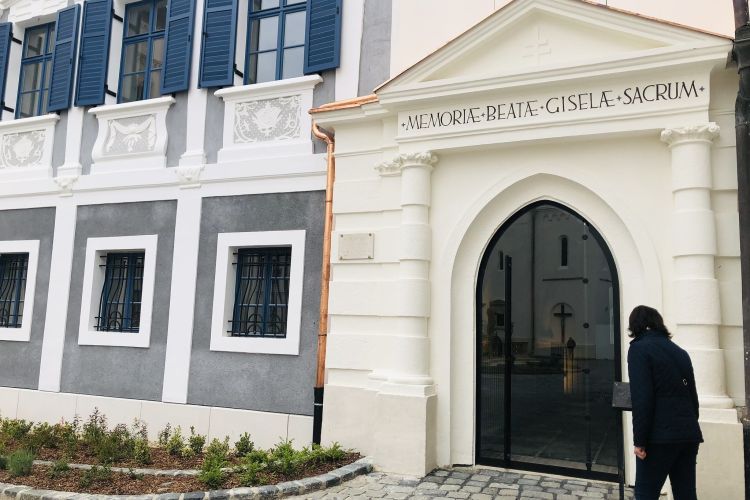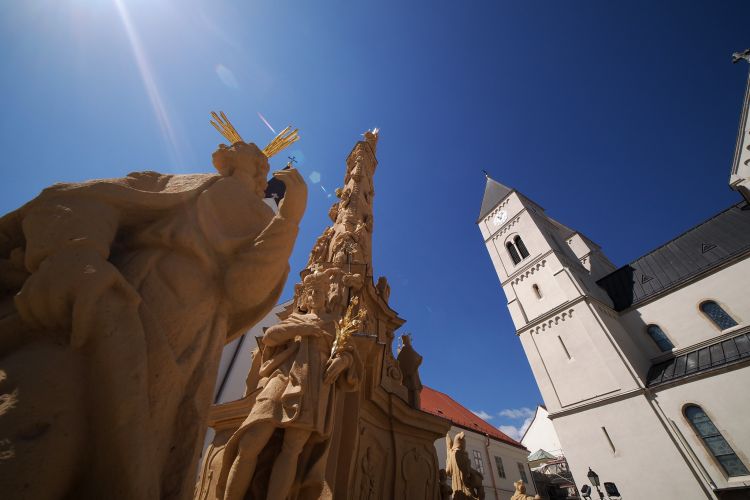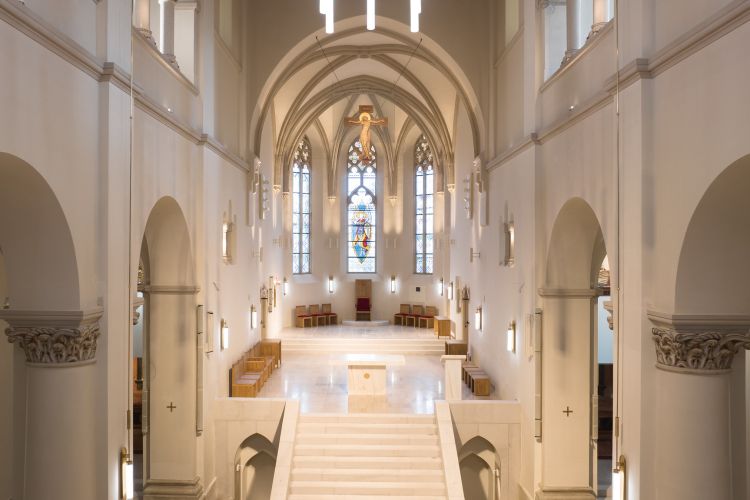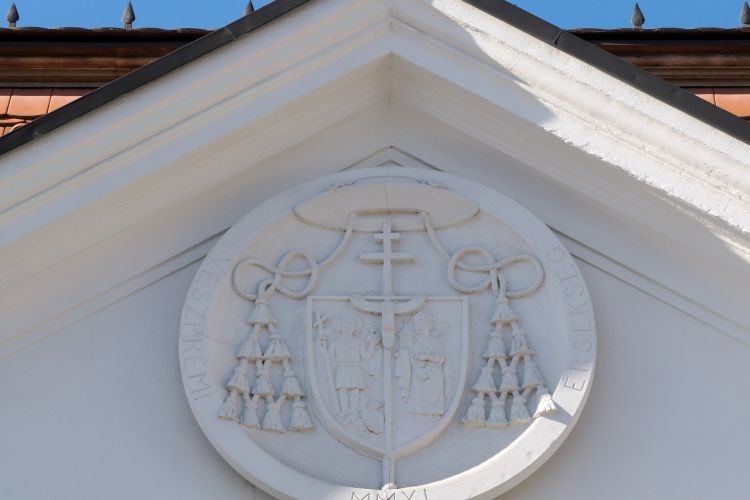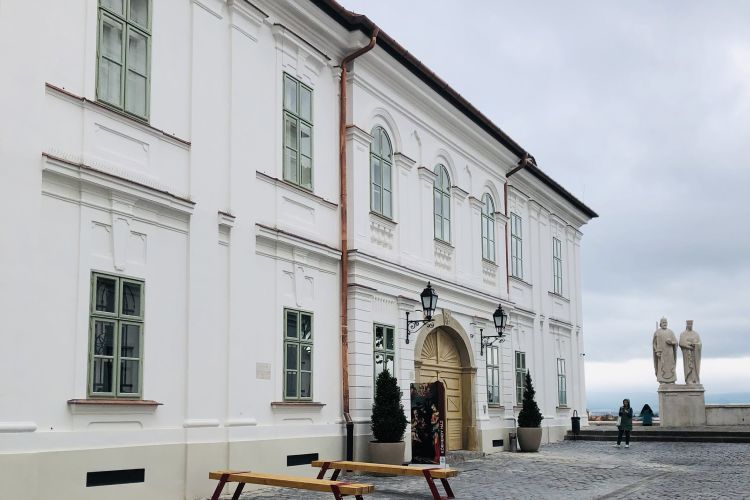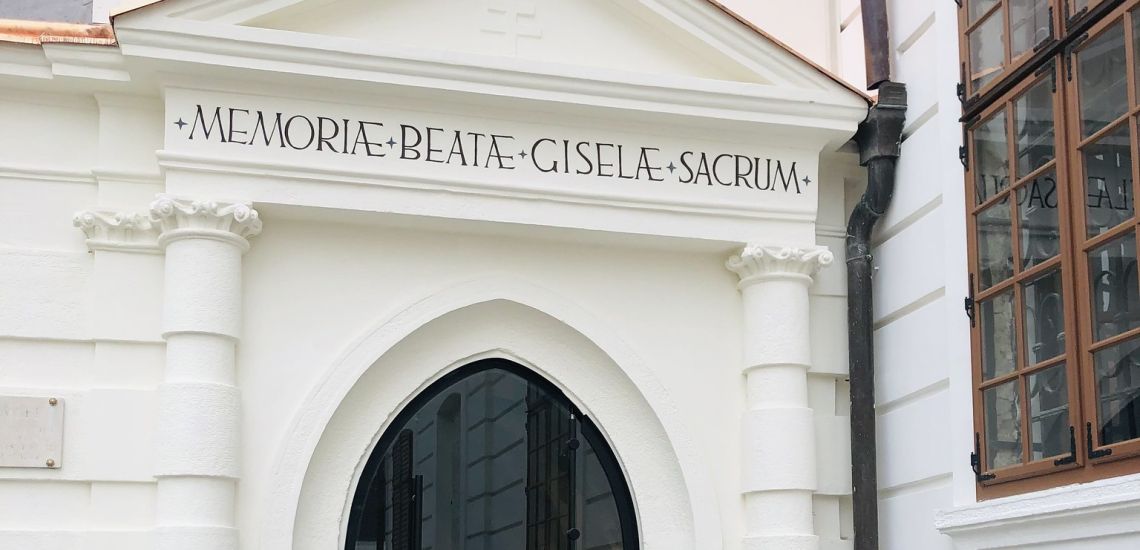
This episcopal or royal private chapel was built by Bishop Robertus. The walls are covered with Byzantie frescoes of the apostles painted in the 13th century which are among the oldest paintings in Hungary. Other unique traits of the chapel include its archstones.
Today’s Gothic building, which dates back to the 18th century, was almost completely destroyed in the Turkish period. The interior is one of the oldest in Hungary, making the chapel one of the most important sights of Veszprém.
Not only the keystones of the vaults are exceptionally rare and old but also the frescoes of the apostles decorating the walls since the 13th century. The chapel can be divided into three units: two squarish rectangular and a square-shaped chancels. The Chapel was renovated in the 1930s and the inscription visible on the altar “The faith of our ancestors, the hope of the future” was born at that time. Not only the keystones of the vaults are exceptionally rare and old but also the frescoes of the apostles decorating the walls since the 13th century.
The chapel can be divided into three units: two squarish rectangular and a square-shaped chancels. The Chapel was renovated in the 1930s and the inscription visible on the altar “The faith of our ancestors, the hope of the future” was born at that time.
“When the pagans attacked Veszprém, only Queen Gisela was back home. King St. Stephen was travelling in the country because he was gathering an army against the pagans. When he discovered that there is a huge problem, he hurried back to Veszprém as fast as he could. However, from the plain it was impossible to enter the castle because the enemy occupied all the routes. King St. Stephen then got round towards the steep cliffs. But he didn't even have time to get off his horse because the pagans noticed him and immediately rushed at him. At that moment Queen Gisela was praying for her lord in the church, yet, hearing the fight she ran out of the church, and so she saw as St. Stephen started jumping onto the cliff while still being on horseback. The Queen left the chapel in such a hurry that she also brought the bright crucifix with her, and began to wave with it, signing her lord where he should guide his horse, so that the king found the steep walkway, but the pagans would have caught up if he had not thrown his mantle, his sword, his purse, and his gold chain away, one after the other. While the pagans were fighting over the king's treasures and were trying to pull the golden horseshoe of the king’s horse out of the rock, St. Stephen entered the castle without trouble. When the pagans saw that St. Stephen was up in the castle, they were greatly frightened and quickly retreated from the scene. To the place where Queen Gisela waved, St Stephen had a chapel built.” - Salesianum - Archbishopric's Touristic Centre
The Gisela Chapel is temporarily not visitable.
